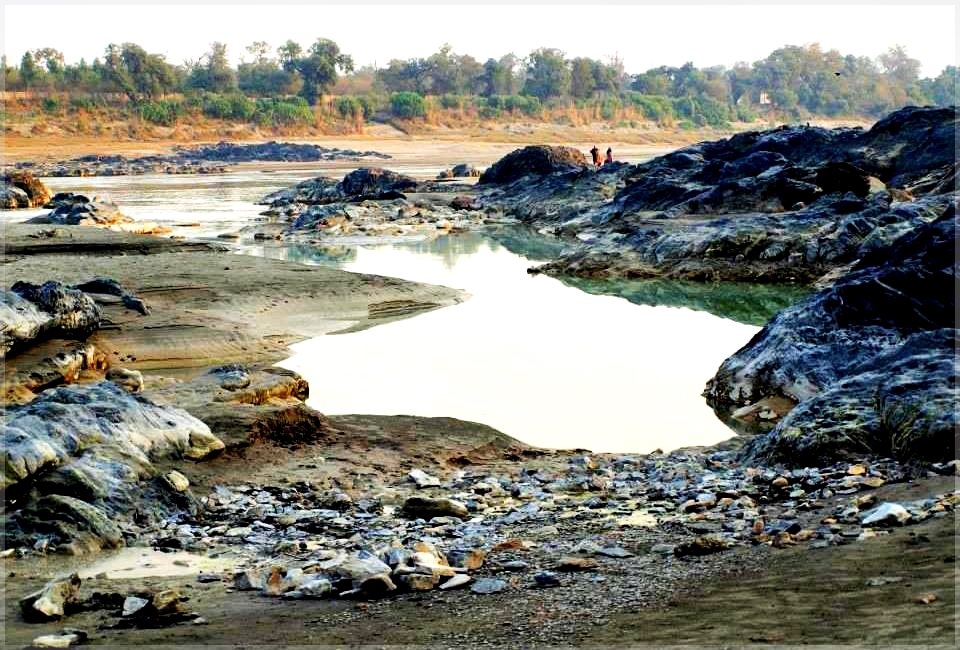On This Day 28 April 2024 Sunday
On This Day 28 April, Sam Vikram: 2081 Purnimanta Mass: Vaisakha Paksha: Tithi: Krishna Paksha Panchami – Apr 28 08:22 AM – Apr 29 07:57 AM, let us have a quick look of the events and anniversaries of India and the world
 Panchang /
Panchang /
Shaka Samvat: 1946
Purnimanta: Vaisakha
Tithi: Krishna Paksha Panchami – Apr 28 08:22 AM – Apr 29 07:57 AM
Yoga:
Siva – Apr 28 03:23 AM – Apr 29 02:05 AM
Siddha – Apr 29 02:05 AM – Apr 30 12:25 AM
Karana:
Balava – Apr 27 08:23 PM – Apr 28 08:22 AM
Kaulava – Apr 28 08:22 AM – Apr 28 08:13 PM
Taitila – Apr 28 08:13 PM – Apr 29 07:57 AM”
Sunrise: 5:46
Sunset: 18:50
Moonrise: 23:22
Moonset: 9:27
 Auspicious Time
Auspicious Time
Abhijit Muhurat – 11:52 AM – 12:44 PM
Amrit Kaal – 10:23 PM – 12:00 AM
Brahma Muhurat – 04:09 AM – 04:57 AM
![]() Inauspicious Time
Inauspicious Time
Rahu – 5:12 PM – 6:50 PM
Yamaganda – 12:18 PM – 1:56 PM
Gulika – 3:34 PM – 5:12 PM
Dur Muhurat – 05:05 PM – 05:58 PM
Varjyam – 12:35 PM – 02:12 PM, 03:11 AM – 04:48 AM
Information Source: https://www.prokerala.com/
Today / आज
Independence Fighters sacrificed- At Least: 4
Major Historical Events
Indian Village Electrification:
The Indian government’s announcement on April 28, 2018, marked a significant milestone in the country’s history, as it was declared that every village in India had been brought onto the electricity grid. This achievement was a result of concerted efforts that accelerated in the five years leading up to the announcement. The drive towards electrification led to around half a billion people gaining access to electricity since the year 2000, with the push in the last few years being particularly impactful. Not only did the initiative aim to supply electricity to every village but also set an ambitious target to ensure universal household electricity access, initially expected to be achieved by the early 2020s. However, Prime Minister Modi moved this target to the end of 2018, with the objective of improving the lives of over 230 million people (IEA).
Despite the success in electrification, challenges remained, particularly concerning the quality and reliability of electricity supply in rural areas compared to urban centers. Discoms, or distribution companies, were under financial strain due to the higher costs associated with supplying electricity to remote villages. This led to significant disparities in power outages and voltage fluctuations between urban and rural areas. Efforts to improve this situation included government schemes such as UDAY and the use of decentralized renewable energy sources, which some studies found were more cost-effective and preferable for remote communities despite higher initial costs compared to extending the main grid. The World Bank noted that the development resulting from electricity access in countries like India hinges significantly on the quality of supply (DownToEarth).
The progress in electrification and the commitment to providing quality electricity to rural areas reflect a broader goal to enable development through sustainable energy access. While the government continues to work on these issues, it is clear that the journey to consistent, reliable, and quality electricity for all is an ongoing one, with the focus now shifting beyond basic connections to the overall utility and effectiveness of the power supplied.
End of Bajirao I’s Reign:
On April 28, 1740, the era of Peshwa Bajirao I, a renowned generalissimo of the Maratha Empire, came to an end. His tenure as Peshwa is celebrated for strategic expansions and military reforms that fortified Maratha power in the Indian subcontinent. Bajirao’s campaigns against the Mughal Empire extended Maratha influence to its zenith and laid the groundwork for what would become a formidable regional power that significantly impacted the history of India.
Battle of Attock:
The significant Battle of Attock took place on April 28, 1758, marking a crucial point in the ongoing conflict between the Maratha Empire and the Durrani Empire. The Maratha forces, led with great valor by Raghunathrao and Mahadaji Shinde, emerged victorious. This victory was not merely a testament to their military might but also a strategic maneuver that ensured Maratha control over the Attock Fort—a fortification of immense importance on the banks of the Indus River. This triumph enabled the Maratha Empire to gain a stronghold in the northwest frontier, which opened new avenues for trade and influence, reinforcing their status as a dominant power and altering the geopolitical fabric of the region. The capture of Attock represents a pivotal chapter in the Indian history of military engagements, with long-term implications for the balance of power in South Asia.
Budgam District Blast:
The blast in Budgam District, Jammu and Kashmir on April 28, 2014, resulted in 18 injuries but fortunately did not lead to any fatalities. The incident is listed among various terrorist incidents that have occurred in India .
Lynching of Mahant Ramdas:
History in Brief On This Day
Port Arthur Massacre: A tragic mass shooting occurred on April 28-29, 1996, at Port Arthur, Tasmania, leading to significant gun law reforms in Australia.
Mutiny on the Bounty: On April 28, 1789, Fletcher Christian led a mutiny aboard the HMS Bounty against Captain William Bligh.
End of Azud ud-Daulah’s Reign: Azud ud-Daulah, also known as Babar Ali Khan Bahadur’s reign, ended on April 28, 1810.
Red Army Invasion: The invasion of Azerbaijan and Armenia by the Red Army concluded the Armenian–Azerbaijani War on April 27-28, 1920.
Fall of Mussolini: On April 28, 1945, Fascist rule ended in Italy with the execution of Benito Mussolini.
4th National Film Awards, India: “Kabuliwala” was awarded the Golden Lotus on April 28, 1957.
6th National Film Awards, India: “Sagar Sangamey” received the Golden Lotus on April 28, 1959.
Charles de Gaulle Resigns: France’s President Charles de Gaulle resigned after a failed referendum on April 28, 1969.
Kyrgyzstan-Tajikistan Border Clash: A border conflict between Kyrgyzstan and Tajikistan resulted in 55 deaths starting from April 28 to May 1, 2021.
Anniversaries On This Day
Celebrity Births: Celebrating their birthdays on April 28 are Nikkhil Advani, Sharman Joshi, Sneha Khanwalkar, Juan Mata, and Blake Bortles.
Celebrity Deaths: Remembering Jim Valvano, who passed away on April 28, 1993, and Brandon Burlsworth, who died on April 28, 1999.
Sneha Khanwalkar (Born April 28, 1983) – Sneha Khanwalkar is an innovative music director in the Indian film industry, renowned for her eclectic and unique approach to music composition. Her work, especially in films like “Oye Lucky! Lucky Oye!” and “Gangs of Wasseypur,” showcases a distinctive style that blends traditional and contemporary sounds, making her one of the most exciting music directors of her generation.
Juan Mata (Born April 28, 1988) – Juan Mata is a celebrated professional footballer from Burgos, Spain, known for his tenure with clubs like Chelsea and Manchester United. As a midfielder, Mata has been praised for his skill, vision, and ability to score crucial goals, making significant contributions to his teams’ successes both domestically and internationally.
Blake Bortles (Born April 28, 1992) – An American football quarterback from Orlando, Florida, Blake Bortles has played in the NFL for teams such as the Jacksonville Jaguars and Los Angeles Rams. Known for his strong arm and athletic ability, Bortles has had a noteworthy impact in the American football scene.
Jim Valvano (Died April 28, 1993) – Jim Valvano was an inspirational basketball coach and broadcaster. As the head coach of North Carolina State University, he led his team to a dramatic and unexpected NCAA Championship win in 1983. Known for his charismatic and passionate speeches, particularly about his battle with cancer, Valvano’s legacy includes his enduring “Don’t Give Up, Don’t Ever Give Up” speech, which continues to motivate and touch the hearts of many.
Jon Pall Sigmarsson – Strength Legend: Born on April 28, 1960, in Hafnarfjordur, Iceland, Jon Pall Sigmarsson was celebrated for his strength and charisma in the world of strongman competitions.
Barry Larkin – Baseball Icon: Barry Larkin, a standout Major League Baseball player known for his time with the Cincinnati Reds, was born on April 28, 1964, in Cincinnati, Ohio, USA.
Diego Simeone – Football Maestro: Born on April 28, 1970, in Buenos Aires, Argentina, Diego Simeone has made significant contributions to football both as a player and a renowned coach.
Nicklas Lidström – Ice Hockey Virtuoso: Celebrating his birthday on April 28, 1970, Nicklas Lidström from Krylbo, Avesta, Sweden, is revered as one of the greatest defensemen in the history of the NHL.
Brandon Burlsworth (Died April 28, 1999) – Widely considered one of the greatest walk-ons in college football history, Brandon Burlsworth’s story is one of determination and perseverance. Despite facing numerous challenges, he earned a scholarship at the University of Arkansas and became a top player. His tragic death in a car accident just days after being drafted into the NFL was a profound loss to the sports community.
On this day 28 April – Independence Struggle Events
The struggle for independence in India is marked by numerous sacrifices and acts of valor by countless individuals across the nation. The 28th of April in various years has been significant for several events related to the Indian independence movement, illustrating the resolve and resilience of those who fought against colonial rule. This essay delves into the lives and contributions of some of these brave souls whose actions on this day played a crucial role in the broader context of the freedom struggle.
The Martyrdom of Gajan Singh
On April 28, 1925, Gajan Singh, a former military man from Paldi, Hoshiarpur in Punjab, met a tragic yet heroic end. He was involved in the Akali movement, particularly noted for his participation in the Guru-ka-Bagh Morcha. Gajan Singh joined a peaceful Sikh Jatha to Jaito Gurdwara Gangsar in Nabha as part of the resistance against British restrictions on prayer assemblies. The Jatha faced harsh opposition from Wilson Johnston, the Administrator of Nabha, leading to the arrest and subsequent brutal beating to death of Gajan Singh in Nabha Bir Jail. His sacrifice remains a poignant reminder of the peaceful yet firm resistance offered by the Akali reformers against colonial policies.
The Endurance of Bukka
Bukka, an active participant in the 1857 Uprising, represents the undying spirit of resistance against foreign domination during the revolt. Captured for his role in inciting fellow rebels and attacking British establishments in the Bombay Presidency, he was sentenced on January 14, 1858, to 14 years of rigorous imprisonment ‘with labour in irons’. Transported to the Andaman Islands in March 1859, Bukka’s struggle ended with his death in captivity on April 28, 1859. His story is a testament to the severe hardships faced by rebels during the uprising.
Narain Singh’s Defiance
Similarly, Narain Singh, a Sepoy in the East India Company army, chose to abandon his post during the 1857 Uprising and join the rebel forces in Khandesh, Maharashtra. His acts of valor against British forces, however, led to his capture and sentencing on June 11, 1858, to 10 years of transportation to the Andaman Islands, where he died on April 28, 1860. His transition from a Company soldier to a freedom fighter marks a significant act of defiance against colonial rule.
The Struggle of Nuthoo and Ismail Khan
Nuthoo and Ismail Khan, both part of the 1857 Uprising in the Bombay Presidency, shared similar fates. Nuthoo, known for his financial support to the rebel cause and direct combat against the British, was sentenced to life imprisonment on March 23, 1858, and transported to the Andaman Islands, where he died on April 28, 1859. Ismail Khan, recognized for leading local plundering raids against British establishments, was also sentenced to life imprisonment and died in the Andaman Islands on July 26, 1859, after being transported there on March 7, 1859. Their stories highlight the severe crackdown on rebels by the British and the extreme conditions faced by those transported to the Andaman Islands.
Conclusion
The tales of these individuals on April 28 across different years reflect the intense and often brutal struggles that characterized the Indian fight for independence. From peaceful protests to armed rebellion, the actions of these men embody the multifaceted resistance against colonial rule, underscoring a collective aspiration for freedom that transcended individual suffering and sacrifice. Their legacies endure as a stark reminder of the price paid for the liberties enjoyed today.
Feature Image: The image presents a natural river landscape with water meandering through a rocky terrain. The foreground is dominated by rugged dark rocks and pebbles, leading to a calm body of water reflecting the light. The riverbank is lined with a mix of sand and stones, curving into the distance. A sparse line of trees can be seen in the midground, along with a clear sky above. There are a few individuals visible in the distance, adding a human element to the otherwise serene and wild environment. (Click here to see image)

What i do not understood is in reality how you’re not actually a lot more neatly-favored than you might be now. You’re very intelligent. You understand therefore significantly when it comes to this subject, produced me in my view imagine it from so many varied angles. Its like women and men aren’t interested except it is one thing to accomplish with Girl gaga! Your individual stuffs nice. Always maintain it up!
Wonderful beat ! I would like to apprentice even as you amend your website, how could i subscribe for a weblog site? The account helped me a acceptable deal. I had been a little bit familiar of this your broadcast offered vivid clear idea
What¦s Going down i’m new to this, I stumbled upon this I have found It absolutely useful and it has helped me out loads. I hope to contribute & assist different customers like its aided me. Good job.